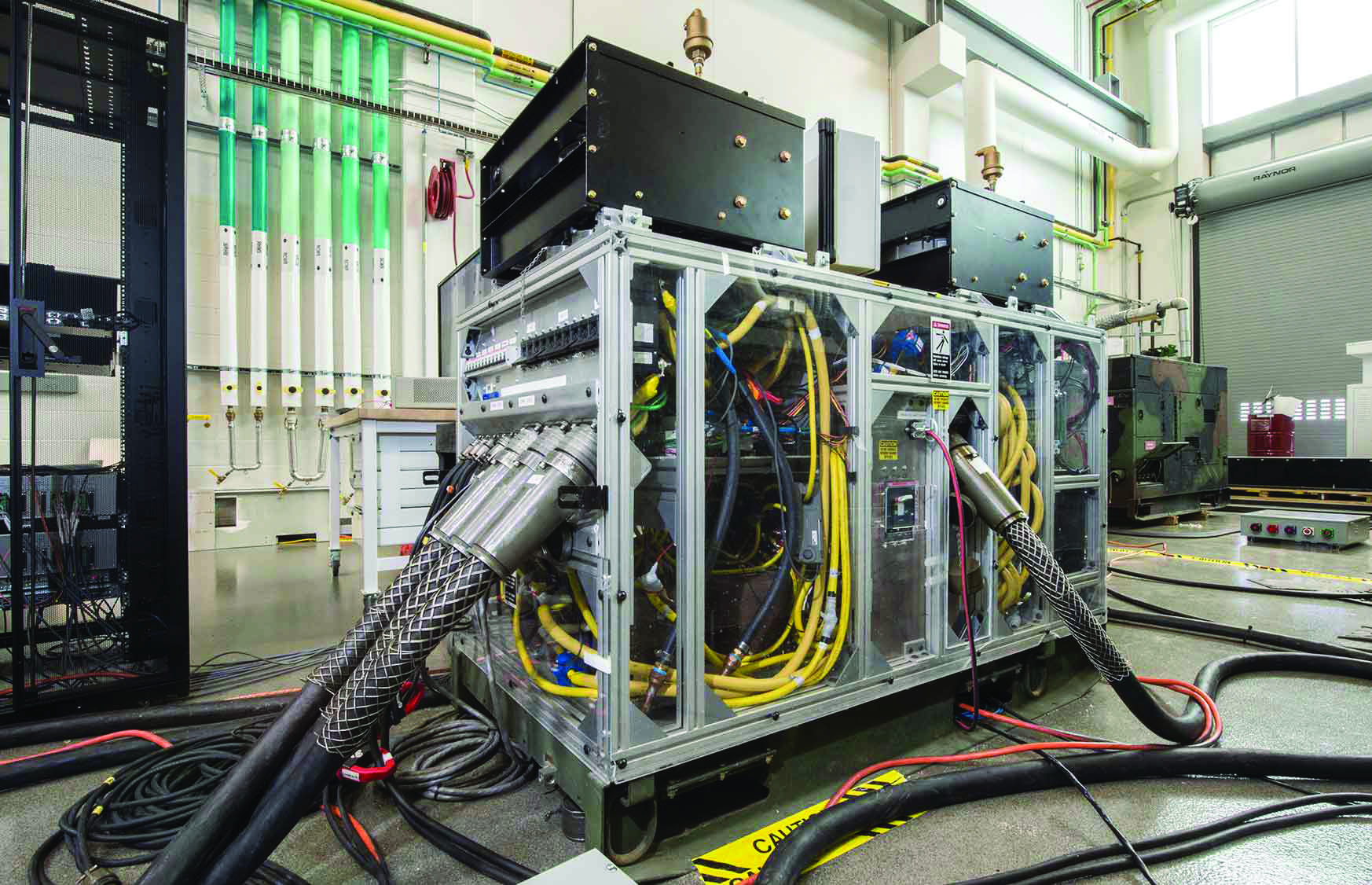Novel Power Converter Integrating Multiple Power Sources Could Replace Diesel Generators
Researchers at the U.S. Department of Energy’s National Renewable Energy Laboratory (NREL) have developed a unique large-scale power converter that can swiftly switch between multiple energy sources to help ensure an uninterrupted power supply.
Currently used at U.S. Army forward operating bases, the “Consolidated Utility Base Energy” (CUBE) system could potentially replace diesel-powered generators. According to NREL electrical engineer Martin Shirazi, who co-designed CUBE with NREL’s Gregory Martin, the system is essentially “a glorified power conditioning protection and distribution generation box” that integrates various power sources (Figure 5). “You connect the solar panels to it. You connect the battery to it. You connect the generator to it,” he explained.
Development of the system began in 2007 when representatives from the Army’s Mobile Electric Power division visited NREL’s National Wind Technology Center to explore how NREL’s microgrid capabilities could be used in conjunction with the Army’s mobile power systems. Distributed Energy Research Test Facility Senior Engineer Bill Kramer, who left the project in 2013, suggested running advanced simulations on different combinations of power sources, noting that theoretically, by taking advantage of multiple energy sources, the Army could slash its diesel fuel use by as much as 25%.
Testing of the CUBE continued over several years in the Energy Systems Integration Facility (ESIF) on NREL’s main campus in Golden, Colorado, backed by California engineering company Wyle Laboratories. NREL documents show that tests included two 24-hour demonstration runs using a measured load profile at a forward operating base during a statewide military exercise. One test comprised the CUBE system running with two 30-kW diesel generators, 21.2-kW of simulated photovoltaic solar, and a 30-kW/40-kWh lithium-ion battery. The other test involved only two diesel generators.
Over the 24-hour period, the system achieved a 31% reduction in fuel use and a 42% reduction in overall diesel run-time relative to the diesel-only case. Additional tests demonstrated that the CUBE could provide comparable load step response as a diesel generator, maintain high power quality during transitions from diesel generator to CUBE and vice versa, as well as provide high power quality during a black start onto a load.
While the CUBE is designed to meet military specifications—it can handle wide swings in temperatures and withstand conditions from –40F to 140F—the system is still “very much a lab queen,” Shirazi remarked. “It’s a maintenance nightmare. If anybody ever wanted to replace something, you’ve got to take the whole thing apart to get at it. From a mechanical integration point of view, it would need to be designed by somebody with manufacturing expertise.” NREL doesn’t have any patents on the hardware, though it has copyrighted the software required to draw power from whatever source is available, including the local grid, and convert it into usable power.
Improvements to the system continue, nevertheless. The Army’s Rapid Equipping Force, a unit that provides troops with current technologies and vets emerging ones, suggested replacing the 575-pound alternating current transformer with a 175-pound direct current transformer to make it easier to transport. The adaptable system could also be modified for several other applications, including to help generate power in remote locations, or for emergency power at disaster-hit sites.
—Sonal Patel is a POWER associate editor
